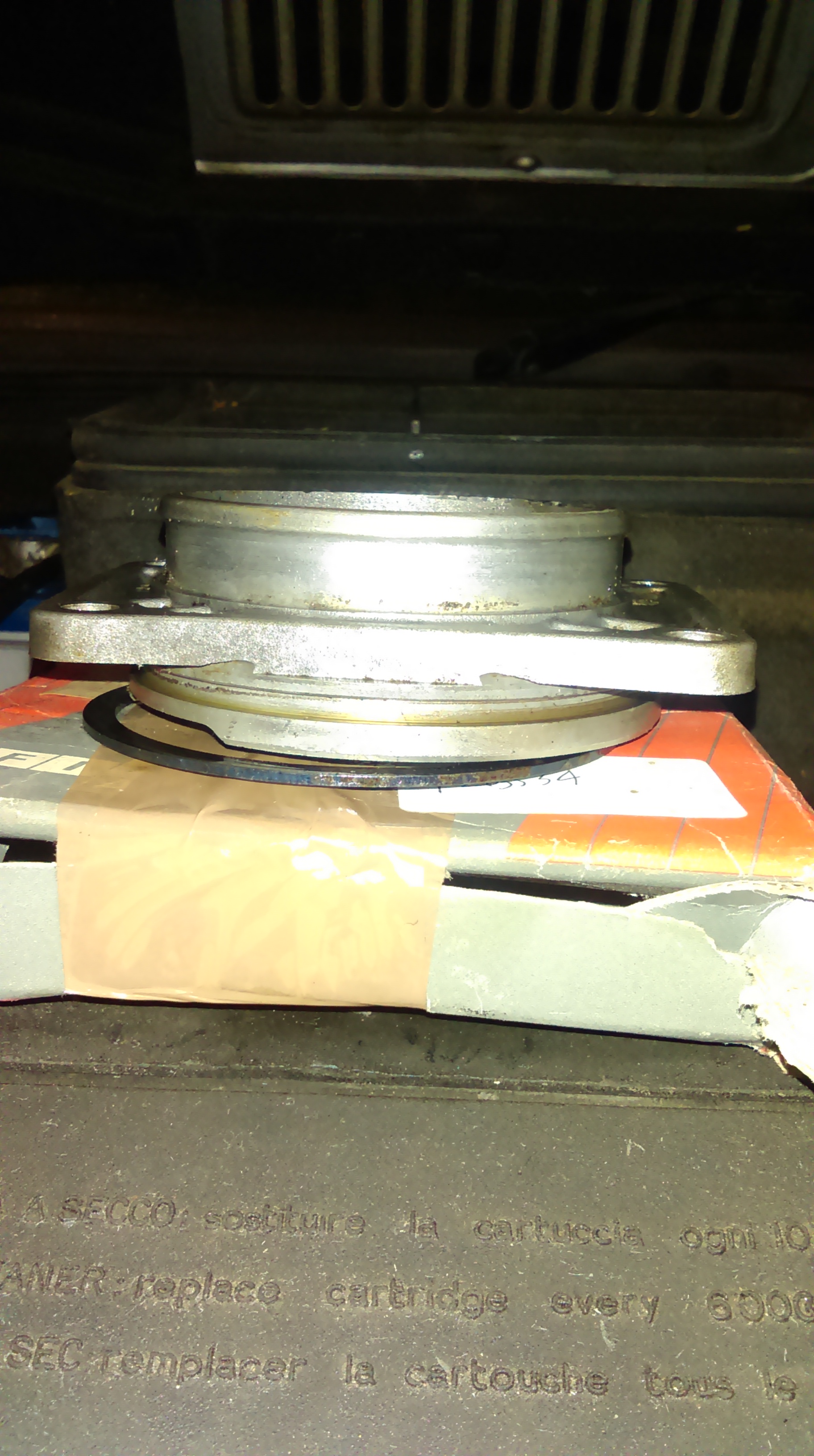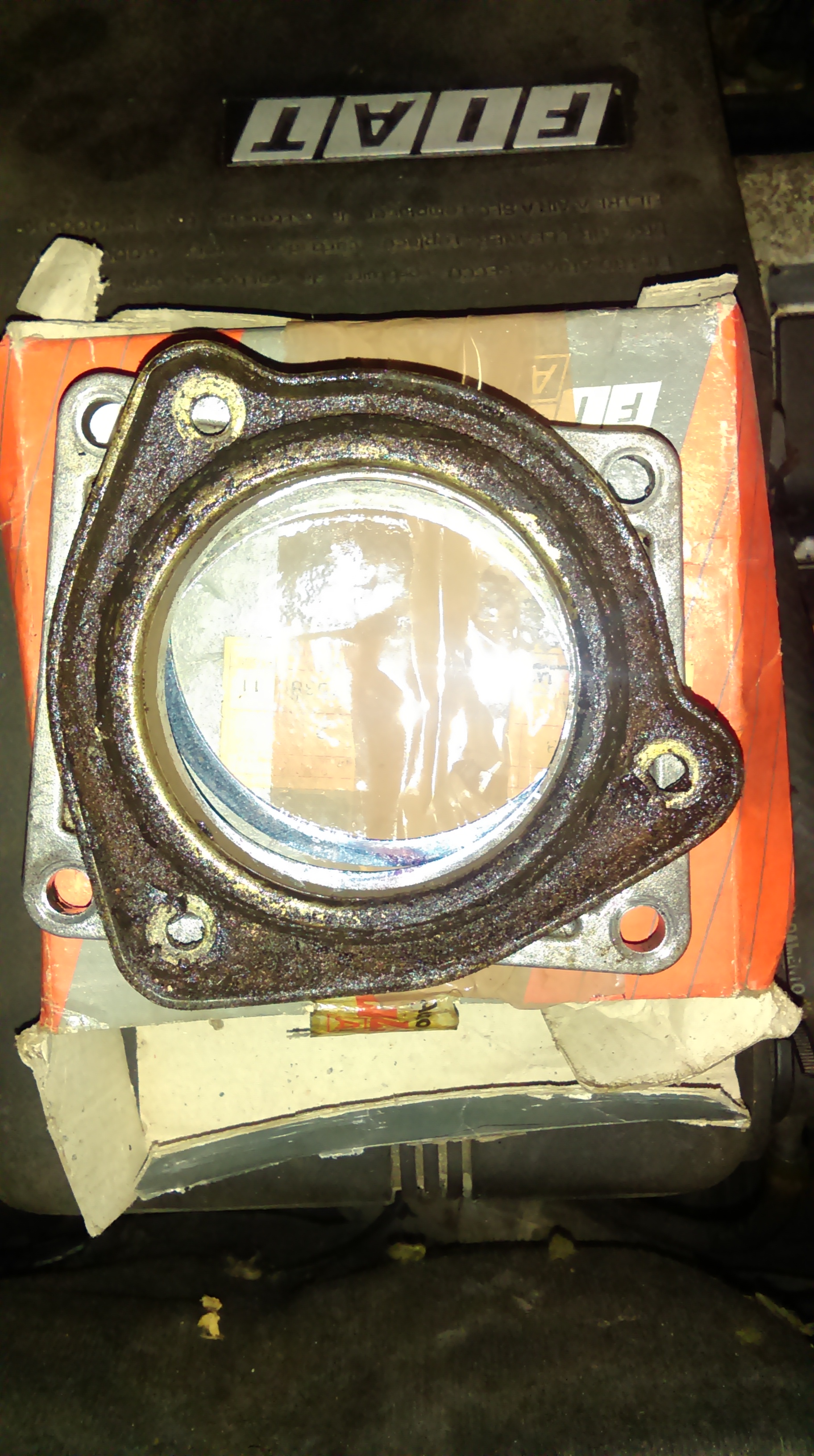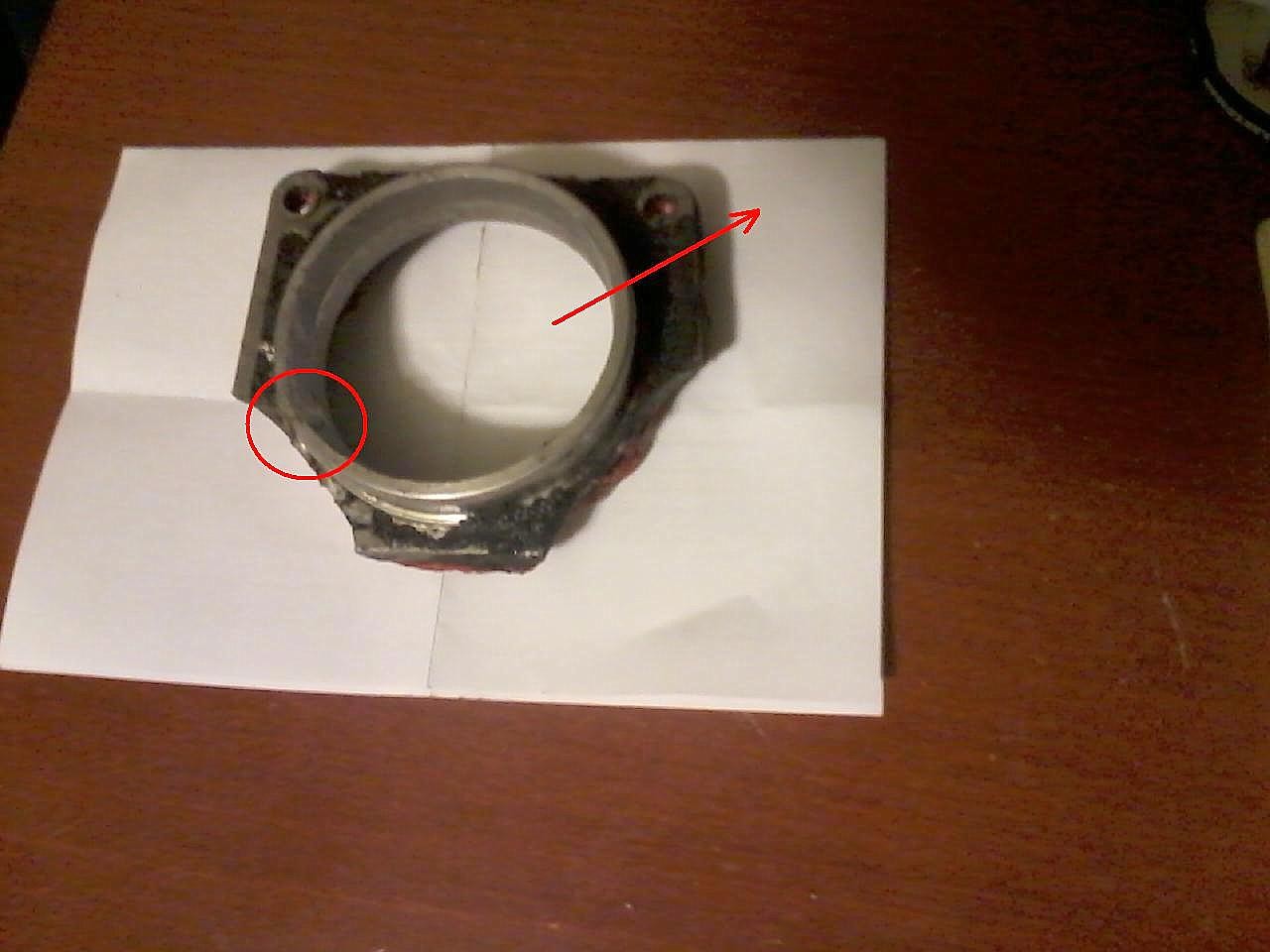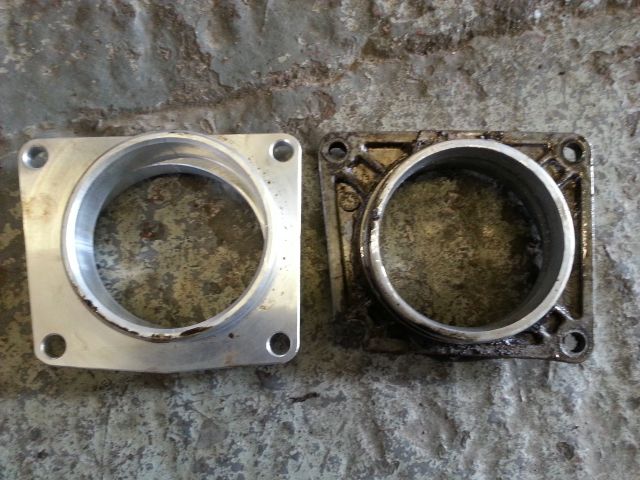As I understand it the options for a flange capable of accepting lifted suspension (-See kolza's excellent recent work in this area) are:
1. Rialzi4x4 billet 'Flangia Modifica' for Euro 119 at today's price.
2. Steel Fiat 127 version for £80 ish.
3. Risk it and hope for the best..
I bought a 127 steel gearbox left side output flange suspecting my aluminium original to be on the way out.
It wasn't, but that's another story.
So I fitted the steel one and discovered that it needs the collar from the right hand side, plus matching boot, instead of the clamp on design that the left side normally has. - Thanks AndyPanda4x4.
All of which got me thinking. - Compare the two designs in profile and because of the difference in boot attachment, the steel version is a fair bit slimmer/shorter/sticks out less from the gearbox. Resulting in more space for the driveshaft to droop before making contact..

- I omitted to photograph the two side by side, sorry.
So, if you're still with me on this. The 127 flange is tougher and less likely to foul with a lift kit but it does cost about £80.
What if we cut down the original aluminium flange to the same sort of height as the steel one, drilled and tapped three holes (which looks tight but just achievable and hey - it's not like any of the set ups keep oil in particularly well anyway)

to get a free(ish) lift ready flange option..
The other role of this flange, of course, is to preload the diff bearings. And taking away half or more of this collar will weaken it. Possibly significantly but the loads aren't that high and the collar inside the box that bears against the shims remains untouched, plus the addition of a bolted on steel clamp will add a bit of strength back too, so overall.. We need a test.
Jacob, Andy, Si?
1. Rialzi4x4 billet 'Flangia Modifica' for Euro 119 at today's price.
2. Steel Fiat 127 version for £80 ish.
3. Risk it and hope for the best..
I bought a 127 steel gearbox left side output flange suspecting my aluminium original to be on the way out.
It wasn't, but that's another story.
So I fitted the steel one and discovered that it needs the collar from the right hand side, plus matching boot, instead of the clamp on design that the left side normally has. - Thanks AndyPanda4x4.
All of which got me thinking. - Compare the two designs in profile and because of the difference in boot attachment, the steel version is a fair bit slimmer/shorter/sticks out less from the gearbox. Resulting in more space for the driveshaft to droop before making contact..

- I omitted to photograph the two side by side, sorry.
So, if you're still with me on this. The 127 flange is tougher and less likely to foul with a lift kit but it does cost about £80.
What if we cut down the original aluminium flange to the same sort of height as the steel one, drilled and tapped three holes (which looks tight but just achievable and hey - it's not like any of the set ups keep oil in particularly well anyway)

to get a free(ish) lift ready flange option..
The other role of this flange, of course, is to preload the diff bearings. And taking away half or more of this collar will weaken it. Possibly significantly but the loads aren't that high and the collar inside the box that bears against the shims remains untouched, plus the addition of a bolted on steel clamp will add a bit of strength back too, so overall.. We need a test.
Jacob, Andy, Si?
Last edited:




